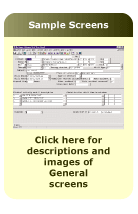|
 Rx:Home
Software® is written in Oracle and runs in the cloud - either
on the RxHome Corporation servers or your own internal cloud on
any server platform supported by Oracle. Keep your options open
with Oracle and Rx:Home Software. Rx:Home
Software® is written in Oracle and runs in the cloud - either
on the RxHome Corporation servers or your own internal cloud on
any server platform supported by Oracle. Keep your options open
with Oracle and Rx:Home Software.
Multiple companies and service branches are supported throughout
the system.
Database security provides systemwide access control. For example,
all clinical and financial personnel might be allowed to view prescription
data, but only pharmacists would be allowed to create, edit, or
void a prescription. In addition, access can be restricted by service
branch, allowing staff to see patients, prescriptions, nursing visits,
and invoices only for their own branch.
Because of its dominant market position, Oracle is very well supported
by third-party query tools, report writers, and other tools. Since
the security and integrity constraints are maintained at the database
level, not in the screens or reports, the security and integrity
are maintained and not bypassed by use of such third-party tools.
Powerful query features allow searching for information by any combination
of data fields on a screen.
The system is easy to learn: either menus or function keys may
be used to perform basic functions such as queries; each field has
help text; and fields with lookups are marked on the screen. For
example, while entering a new patient press the lookup key to look
for the physician. If the physician is not in the system, press
the same key again to add the physician, then copy the physician
directly back to the patient -- all without ever leaving the patient
entry screen.
Duplicate data, such as a patient that has been entered twice,
can be merged by users with appropriate special security access.
Every pharmacy has special needs and preferences, so the system
is designed to be configurable. For example, an administrator may
set whether the prescription numbering series is systemwide or service-branch
specific, whether the pharmacists password must be re-entered to
complete a prescription, etc. Flexible menus further customize the
system, allowing, for example, custom menus of care plans. There
is easy control of report destinations: the default printer for
a report may be set systemwide, by branch, or by port, and then
overridden at run time. Report output may be sent to any destination
accessible by the operating system: printers, screens, fax, modem,
etc.. Reports may be run immediately on the screen in the foreground,
or run in the background, or delayed to run at a later time. A wide
selection of report parameters enables each report to select the
specific data desired.
|



![]()
![]()
![]()
![]()